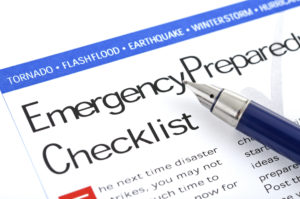 Communication is essential, although we often take it for granted. Today we live in a world where information is instantly available. But what if there is an emergency situation and our communication tools are no longer working? How will you contact loved ones or emergency personal? September is recognized as National Preparedness Month. Icom America wants to provide our customers with some communication solutions, which could be helpful during an emergency.
Communication is essential, although we often take it for granted. Today we live in a world where information is instantly available. But what if there is an emergency situation and our communication tools are no longer working? How will you contact loved ones or emergency personal? September is recognized as National Preparedness Month. Icom America wants to provide our customers with some communication solutions, which could be helpful during an emergency.
Cell Phones
Cell phones are part of our daily lives, however they have vulnerabilities, especially during an emergency. Networks can fail. Cell towers or satellites could go down. Regardless of any failures, cell phones can still be extremely useful. Wireless Emergency Alerts (WEA) messages can be received by your cell phone, even if the network is congested.
If using a cell phone for emergency communications remember CHARGE, WAIT, TEXT:
1. CHARGE: Make sure your main battery is charged and you have a spare cord and battery back up.
2. WAIT: If a call does not go through, wait 10 seconds before trying again.
3. TEXT: For non-emergencies try to send text messages only. During network congestion a text may go through easier.
Email & Social Media
If you have access to the internet, try emailing or posting updates on social media. Both are great ways to keep family and friends informed on your whereabouts and status.
Pay Phones
Who would have guessed pay phones had an important role to play in today’s world of emergency communication solutions. Most pay phones are still on landlines. When other forms of communication are down, pay phones may become the best option.
Two-Way Radio
Within crowded scenarios, two-way radios are a helpful form of communication. Similar to a walkie-talkie radio system, Family Radio Service (FRS) is a two-way, short-distance, hand-held radio. Channels are not private and the radio does need line of site to function, but a FCC license is not required to operate an FRS radio.
Satellite Phones
Satellite phones, while pricy, are a good communication solution, as they will usually work even if the network fails. However, satellite phones need a direct line to a satellite, making their service spotty if one is not available or if a satellite goes down.
HAM Radio
If a catastrophe disables power grids and cell towers, amateur radio delivers a crucial emergency communication solution. Amateur or HAM radio has become the go-to communication system for most emergency response systems, like MARS (the Military Auxiliary Radio System) and ARES (Amateur Radio Emergency Service). There are over 800,000 licensed amateur radio operators, and many are trained as communications support for public safety teams. Anyone can become a HAM, they just need an amateur radio license. If you are a licensed HAM radio operator, plan ahead, and let your family know what frequencies you can be reached on.
Whatever communication solution you decide to go with, make sure you have a communication plan and keep printed copies of all necessary contact numbers. Remember to visit Icom to learn about more radio communications solutions.

